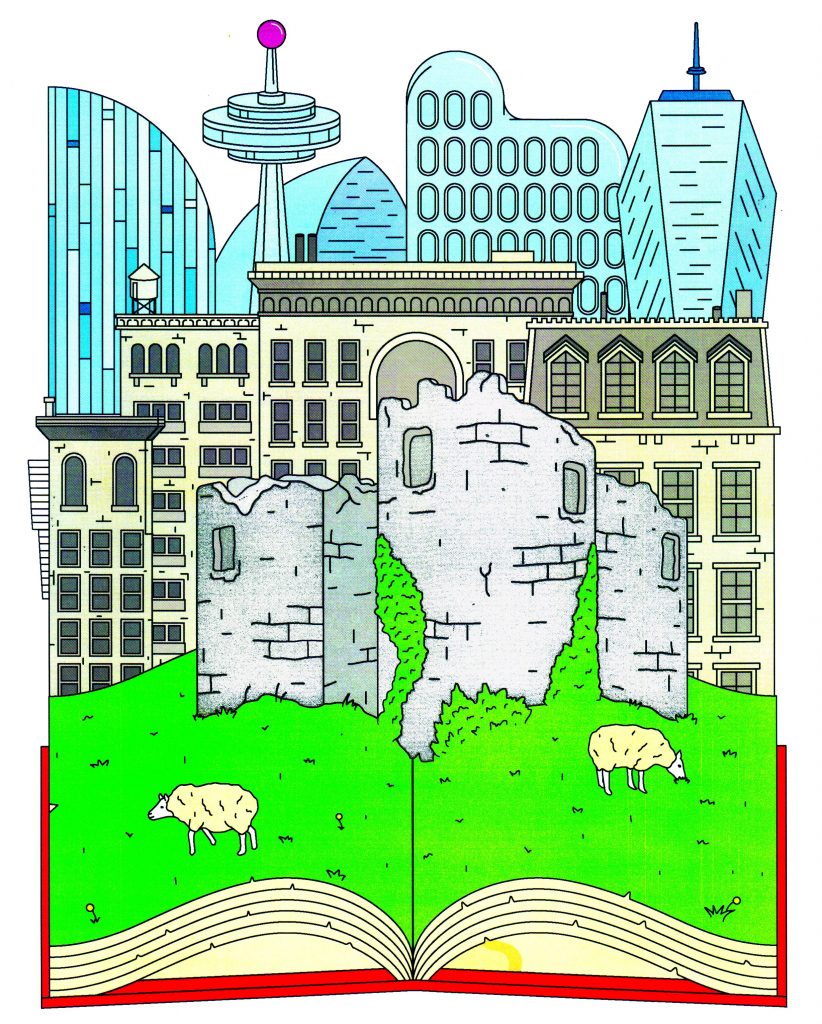This idea must die: ‘Irish’ history is just about Ireland
Dr Niamh Gallagher says island mentalities can pervert our understanding of the past.

Historically, ‘Ireland’ has never ended at the shores of the island – and neither should our understanding of its history. After all, it has been part of the United Kingdom (since the Union of 1801) and its empire for longer than it has been independent (the Irish Free State, the predecessor to the Republic, came into being in 1922). The population of the island of Ireland has repeatedly dispersed throughout the world in waves of emigration. And those emigrant communities have not only played a part in the countries in which they settled, but have in turn influenced affairs in the UK and globally – for example, during two world wars and the Troubles of the late 1960s through to 1998, when the Good Friday agreement was signed.
So why is ‘Irish’ history still consigned to a silo? Not only is it largely absent from UK school curriculums; ‘British’ historians, too, have exiled Ireland from their consciousness. That has resulted in the bizarre framing of major UK events as exclusively Irish. The ‘Irish famine’, which killed one million people in Ireland, took place 40 years into parliamentary rule by Westminster. The ‘Irish Question’ – a name that suggests the UK is somehow removed from it – was a debate among the British ruling classes that originated at the end of the 19th century about how to respond to Ireland’s movement for self-government. And, let’s not forget, the constitutional entity that went to war in 1914 was not Britain; it was the United Kingdom of Great Britain and Ireland.
This is about more than semantics and textbooks. Irish history is, in no small part, global history. Between 1801 and 1921, an estimated eight million people left Ireland and resettled in Britain, the empire, the United States and elsewhere. The population of the island today is just under seven million. In just over a century, Ireland lost the equivalent of its entire population.
The Irish left their island in such numbers that they permanently affected the countries to which they went, often wielding significant cultural and political power. In the US, almost half of all immigrants during the 1820s were Irish, and nearly all American presidents can trace their heritage back to Ireland. By 1891, 230,000 Irish-born people lived in Australia – and that’s not including second and subsequent generations.
Consequently, in the so-called ‘white dominions’ of Canada, Australia and New Zealand, we see highly nuanced forms of Catholic ‘Irishness’ evolve. For example, during the 19th century the British empire was largely negatively perceived by Catholics, most of whom were nationalists. But by the time of the first world war, the children of Irish emigrants born in these territories had done well: they were influential businessmen or clerics, and prosperity had altered their notions of the empire. While still viewed as the reason their parents had left Ireland, the empire was seen as something many Irish abroad wanted to fight for.
Irish identities were strongly felt by the diasporic Irish of both creeds. In Canada, Irish communities lobbied to have an Irish designation for volunteer regiments, such as the Irish Canadian Rangers from Montreal, which recruited through churches, sporting associations and other ‘Irish’ community networks. Their insignia reflects this complex identity: intertwined maple leaves and shamrocks, topped with the British crown.
By contrast, Irish Catholic Americans continued to mistrust the British empire. The US was proud of its own republican inheritance (and liberty from Britain in 1776), and memory of British culpability in the 1840s famine reigned strong in diasporic communities, many of whose parents had fled Ireland during or after the catastrophe. Irish Catholic identity looked different in America than it did in Canada or Australia: it was sympathetic to Irish republicanism and the political parties that sought to ‘liberate’ Ireland from British ‘tyranny’.
We’re used to seeing this as a part of the recent Troubles in Northern Ireland, with Irish-American fundraising helping the IRA procure guns, but Irish-American influence on Britain and the empire has a longer history. In the 1860s, some felt that the best way to liberate Ireland was by invading Canada! And in the 1919-21 War of Independence, Irish-Americans helped the fledgling IRA conduct its guerrilla activities against the crown forces.
So diasporic Irishness takes many forms, and at the heart of these global networks are the intertwined histories of Ireland and Britain, which continued long after partition and Irish independence.
It’s a relationship particularly deserving of reflection at this moment, as we re-examine issues brought to the fore by Black Lives Matter and Brexit. Whether we’re talking about the Windrush generation, or what to do about the ‘Irish’ border when Britain leaves the EU, Britain needs to ‘wake up’ to the reality of its own history, which has always extended far beyond the island itself. Island mentalities can pervert our understanding of the past. It’s time to discard the notion that ‘Irish’ history is just about Ireland – and, by extension, that ‘British’ history is just about Britain.
Dr Niamh Gallagher (St Catharine’s) is a Lecturer in Modern British and Irish History. Her book, Ireland and the Great War: A Social and Political History, won the Royal Historical Society’s Whitfield Prize.







